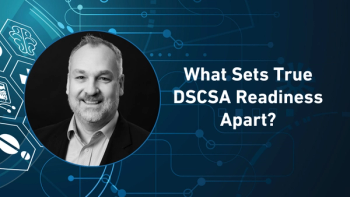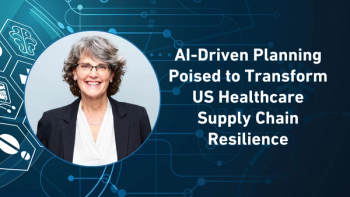
- Pharmaceutical Commerce - April 2022
- Volume 17
- Issue 2
Adding Might to ‘Specialty Lite’
Not quite specialty, not quite retail: Cost-effective access and support strategies for a growing, yet underserved, treatment market
Specialty-lite drugs, recognized as products positioned between the specialty and retail spaces, often require specialty services such as access and reimbursement support, while also having a lower-than-specialty wholesale acquisition cost (WAC) that makes full-time equivalent (FTE) models less financially feasible. For life sciences organizations, striking the balance between enhanced services for patients/healthcare providers (HCPs) and cost-effective solutions is critical for ensuring the long-term success of a specialty-lite drug patient-support program (PSP).
During the last decade, FDA approved more treatments annually, on average, than it did in the prior two decades, resulting in increased competition. Specialty-lite drugs are set to dominate growth in the space, with many life sciences companies leveraging technology-based solutions to remain competitive.
According to a Wall Street Journal article,1 securing formulary positions costs more every year. One organization saw the average list price for its insulin product up 141% since 2012, but average net price down 53% over the same period.
Challenges don’t cease once formulary is secured, however. An American Medical Association (AMA)-conducted survey found that 83% of physicians report the number of prior authorizations (PAs) required for prescription medications and medical services has increased over the last five years.2 Drugs with lower WACs are now finding a slew of new PA requirements needed for their patients to access therapy.
A Drug Channels Institute analysis of company reports3 found that the unweighted average gross-to-net gap in drug prices was -6.0% for 2020. The analysis also found that prices for brand-name drugs dropped, and drugmakers sold their products for less than half of the list price. This gross-to-net squeeze causes cost shifts that can negatively impact the patient if not handled correctly.
These trends prove that specialty-lite drug programs need services that benefit the patient at a cost that is attainable for the manufacturer. To accomplish brand goals at this cost, companies launching specialty-lite drug programs need a solution that addresses both sides of the coin. Unfortunately, few players in the industry have the technology and expertise needed to meet the nuanced needs of this growing market segment.
New approaches for specialty-lite drugs
Innovative technologies can deliver automated specialty services such as e-benefit verification (eBV) and ePA, minimizing FTE requirements, making the cost to companies more economically feasible. Combined with deep expertise on pharmaceutical access challenges, new market entrants are taking on the needs of specialty-lite programs. However, the specific modalities in which these entrants deliver vary based on the vendor and their capabilities. New offerings positioned to meet the needs of specialty-lite drugs include:
- Alternate specialty-lite pharmacies: Built similar to specialty pharmacies, this model focuses on leveraging technology to speed access to therapy. While these pharmacies deliver some electronic support services like eBV and ePA, leveraging a single pharmacy entity may create concern for steerage. In addition to a specialty pharmacy for dispensing, the associated e-services may have limited reach and technology-first functionality.
- Digital pharmacies: This model tends to focus on retail and lifestyle drugs. Often, telehealth services are core to access to specific therapies. Driven by patients, digital pharmacies leverage an e-commerce model and lean on the patient to self-serve throughout their journey.
- Hub-lite services: Using technology and mostly delivering reimbursement support, hub-lite models provide some e-services like eBV and ePA, but may not be able to evolve with the specialty-lite drug’s lifecycle without costly system and process changes.
- Other tailored solutions: CoAssist, for example, AssistRx’s digital patient service, differentiates from the above models, with the ability to kick-off advanced and automated real-time e-support services at Rx intake from the electronic health record (EHR). Support services also include real-time eBV, ePA, eConsent, and eEnrollment. The platform features a limited pharmacy network and its own consignment pharmacy to support the clinical decision and gain visibility to the patient journey, as well as identifies the best affordability option for the patient, and deploys the necessary technology and expertise to evolve the program alongside the product lifecycle.
Selecting an offering for a specialty-lite drug program requires an understanding of the product and the patient/healthcare provider (HCP) population, as well as thoughtful planning for drug lifecycle. The optimal offering for a product meets HCPs in their workflow and patients in their lifeflow to improve access to therapy while reducing or eliminating FTE costs.
Choosing the right option
The optimal offering should be able to evolve throughout the specialty-lite drug’s lifecycle. Many programs require some white-glove services at launch but later can be supported completely via e-support services. It is key that the infrastructure of a product program can address this shift when needed.
Challenges a specialty-lite drug program will face include securing formulary position and navigating access challenges like PAs. Your solution should be flexible enough to implement additional initiatives that can roll on and off over time as needed. For example, payer nudge campaigns that demonstrate demand, volume, and clinical effectiveness of the therapy can be implemented within the first year to improve coverage of the drug and be removed as payers add the product to formulary.
Second, your offering of choice should support a configurable program and selective pharmacy network. These characteristics drive access to the best fulfillment option for the patient, whether that be a free goods, commercial, or cash dispense. This, in turn, drives access, affordability, and adherence for your patients.
Third, e-support services should be initiated at the point of prescription, likely through the EHR, to best meet HCPs in their established workflows. For specialty-lite drugs, this design can make the largest impact on improving uptake, visibility, and outcomes through automated therapy initiation and fulfillment, both accelerating and simplifying the process. As these programs typically won’t leverage FTEs, automated e-support services help fill in the gaps of moving a prescription forward to fulfillment utilizing transactional, manual services when needed.
As more solutions come to market to support the segment of specialty-lite drugs, life sciences organizations should consider which solution will deliver optimal, cost-effective services for their drugs that aren’t quite specialty but aren’t quite retail either. The optimal solution takes both sides into consideration to generate services that support brand goals while ensuring unique HCP, patient, and caregiver needs are met.
About the author
Michael Carr, RPh, is CoAssist Group Vice President, AssistRx.
References
1. “Pharma Giants Get Their Pennies Pinched on Drug Pricing,” Wall Street Journal, March 12, 2021.
2. American Medical Association, Measuring progress in improving prior authorization, 2020.
3. “Gross-to-Net Bubble Update: Net Prices Drop (Again) at Six Top Drugmakers,” Drug Channels, April 14, 2021.
Articles in this issue
over 3 years ago
2022 Patient Support Vendor Directoryover 3 years ago
Pharmaceutical Commerce - April 2022 Issue (PDF)over 3 years ago
Diving in Headfirstover 3 years ago
Oncology Innovation: Optimism & Obstaclesover 3 years ago
The Pulse of Rare Disease Supportover 3 years ago
Patient Centricity: Banishing Buzzwordsover 3 years ago
Success with SP Solutionsover 3 years ago
Hub Programs from Patient Perspectiveover 3 years ago
Patient Support in Europeover 3 years ago
Beyond Payment MethodsNewsletter
Stay ahead in the life sciences industry with Pharmaceutical Commerce, the latest news, trends, and strategies in drug distribution, commercialization, and market access.





